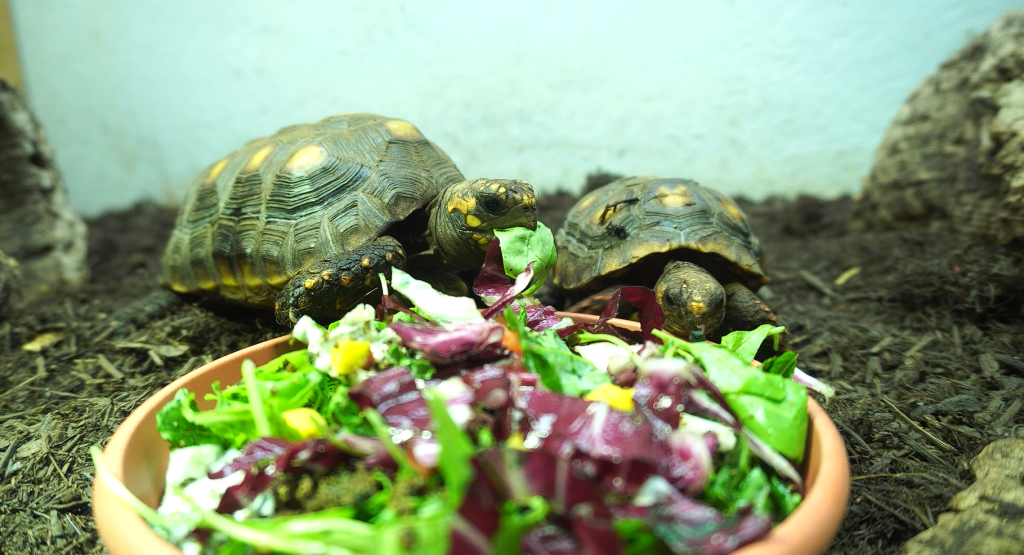Many visitors ask: What do reptiles eat? And that is a very good question.
Reptiles can eat so many types of food that their diets are some of the most varied. This causes them to have a kind of “feeding strategy”, depending on their needs, the state they are in, as well as the type of species. A reptile can be carnivorous, insectivorous, or herbivorous. And in many cases, a bit of everything, omnivores.
Several kitchens are in daily operation and ensure that all the animals housed at BIOPARC Fuengirola have their nutritional needs covered. One of the most curious and colourful is Herpetology, where the team prepares the diets of reptiles and insects, as well as what is known as “live food”.
Green sprouts, rocket, kale, lamb’s lettuce, endive, cabbage, strawberries, tomatoes, bananas and other fruits and vegetables are part of the diet of reptiles such as tortoises, iguanas, chameleons and monitor lizards. “A personalised diet enriched with vitamins that allow us to guarantee the well-being of all the animals”, explains our colleague and head of Herpetology, Milagros Robledo.
These hearty meals are also prepared taking into account the size of the reptiles, their habits, the time of year and the environment in which they are kept. “For the little ones we cut each and every piece of fruit and vegetable or any other ingredient. The giant Malayan turtles live mostly in the water, so we create a kind of ball of vegetables that we leave in the estuaries. Or in the reproductive period we enrich diets with more fruit, calcium supplements, etc.”.
Live food is the basis of reptile nutrition. For this reason, the diet of these insects is also an important part of the Herpetology team’s work. A varied mix of vegetables, fruits, and some leaves, enriched with a few vitamins ensure that the live insects on which the reptiles feed are well nourished and, therefore, so are the reptiles themselves. “Cockroaches, for instance, need a lot of all kinds of food. Crickets are more selective and choose carrots, oranges, or bananas,” says team member Luis Miguel Viton.
From this kitchen come the diets for the live food essential in the nutrition of some of the endangered species of BIOPARC Fuengirola, such as the Fiji iguana, Philippine sailfin lizard, rhinoceros iguana, blue and emerald monitor lizards, crocodiles, or giant Galapagos tortoises, among others.

